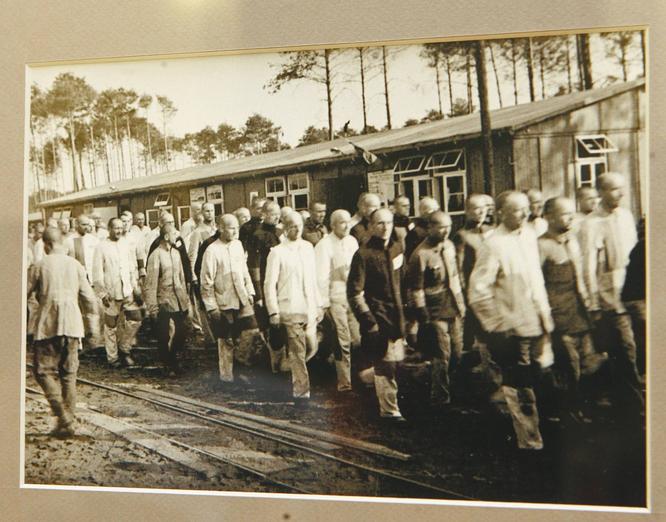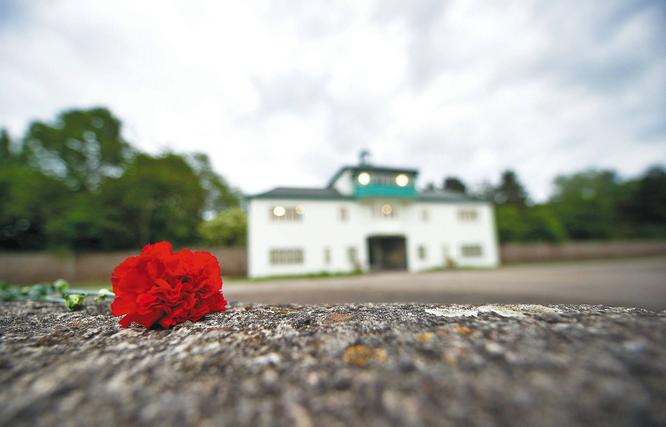

Sachsenhausen concentration camp: run until you drop - Magazine - RNZ
- By sennenqshop/li>
- 761
- 28/12/2022
By Heiko P. Wacker
The Sachsenhausen concentration camp, located around 20 kilometers north of Berlin, was built as a model for other camps. The opposition was to be imprisoned here - but the exploitation of the prisoners was also to be planned and tested. In this context, one must mention the "counterfeiting workshop" run by the SS, in which Jewish prisoners had to forge British pound notes - but also the "shoe testing area".
What sounds so succinct was a perfidious instrument of torture used by the SS, as historian Anne Sudrow explains. As a trained shoemaker, she recognized the purpose of the concentration camp shoe testing track, which even some inmates had viewed as a pure SS harassment. Based on her craft training, Sudrow, whose doctorate on the subject was published in 2010, was able to recognize the true background of the 700 meter long test track. "On this track, the prisoners had to cover up to 48 kilometers a day. That would have been torture in itself, and it was even more so on the different surfaces of the track, on which grit, gravel, clay and slag alternated. No wonder, that the shoe runner detail was particularly feared among the prisoners." Many died from exhaustion or from torture by the SS guards. Those who stumbled could expect more blows and harassment.
Anne Sudrow became aware of the topic a few years ago: During a visit to Sachsenhausen, she also saw the test track, which was partially reconstructed at the original location. She was surprised that this topic had not yet been examined in more detail. Ultimately, this resulted in her monograph "Der Schuh im Nationalsozialismus", which has now been published in its second edition. For a textbook with almost 900 pages, this is not a matter of course. But it also shows that she has brought to light a relevant topic here. The work traces the product history in a German-British-American comparison, and thus penetrates deep into the economic history and the importance of the commodity "shoe".
The shoe testing track itself deals with it primarily with regard to utility value research - after all, a lack of resources and the generally deteriorating supply situation in the Third Reich were also noticeable in seemingly banal everyday objects such as shoes. "The management of shoe production or the attempts to use leather fiber materials or synthetic rubber as substitutes are examples of this development." The materials and shoes delivered directly to the concentration camp had to be tried out by the prisoners, who were assigned a pair every morning.
The German economy was closely intertwined with the founding of the line. At the same time, today's Salamander GmbH, for example, did not want to give an interview on the subject when an ARD documentary was made, pointing out that the company had experienced several changes of ownership in the meantime. Nevertheless, one was concerned. Anne Sudrow, on the other hand, is surprised at the selective perception: "On the one hand, people use the brand and continue to use the company name, but they don't want anything to do with other parts of the story."
The Weinheim company Freudenberg is somewhat more open to its own history. In 1940, Carl Freudenberg AG was involved in both the establishment and operation of the shoe testing facility, and from 1944 the tests were even organized from the company headquarters. This is assumed by Anne Sudrow, whose research has meanwhile provided the impetus for a professional review of the company's history to be carried out by a historian on behalf of the Freudenberg company. For this reason, Freudenberg did not want to explain himself to the Rhein-Neckar-Zeitung, apart from a few insertions (see box) - one would first like to wait for the results of the current research. These will be published in the next few days.

It should not be forgotten, however, that two of the company's heirs were at least willing to speak about the subject as private individuals, but also realized a fund of 120,000 euros raised privately among the shareholders. The amount was donated for the work of the Sachsenhausen and Ravensbrück concentration camp memorial sites, while five surviving "shoe runners" who are known today - there could well be others living in the Ukraine or, for example, in Russia - each received an amount of 5,000 euros.
One of the survivors, Joop Snep, now lives in an old people's home in Amsterdam. After the occupation of Holland by the Wehrmacht, he and his father helped Jews escape. However, both were betrayed and immediately ended up in the shoe runner commando. The SS guards could pick up the pace at will, singing songs and keeping step. As an additional element of humiliation, backpacks filled with sand and stones came into play from 1943 onwards.
"The worst thing was the great fear of not surviving," recalls former prisoner Joop Snep, who was in his early 20s when the concentration camp was liberated and had to struggle with many others over the various kilometers from six o'clock in the morning. "Sometimes they were sneakers, sometimes boots or clogs. You had to wear what was assigned to you," reports the 93-year-old. Some of the shoes had to be worn out until they were completely worn out.
It seems particularly perfidious how little people were considered: "The test persons were ruined in terms of health for the experiments and murdered in series by them or during their course. They were used as human test instruments on which only the physiological movement of her feet while walking was interesting," writes Anne Sudrow.
Accordingly, Joop Snep was also convinced until recently that the shoe runner command was purely a punishment command, a pure chicane. He only knows about the real background since Anne Sudrow's research, which ultimately led to a meeting with Dorothee Freudenberg, who met Joop Snep in 2013 and was impressed by the warmth with which she was received by the former prisoner. "Mr. Snep made it clear to us how much it means to him that someone has finally come," Dorothee Freudenberg is quoted as saying.
Anne Sudrow, on the other hand, works today at the Center for Contemporary History Research in Potsdam - and is still amazed that the companies were able to keep this story secret for seventy years, and even now often do not face up to their responsibility. At least she was able to prove that a large part of the shoe industry and its plastics and adhesive suppliers had cheap tests carried out in the concentration camp. These are also companies that are still successful in the market today.
It is also interesting that the fit tests carried out in the concentration camp for a new Wehrmacht boot - the company Fagus GmbH at the time, a last manufacturer, used the facility from July to November 1944 and supplied the lasts to be tested directly to the concentration camp, whereby the owner at the time also came to the camp personally - a few years later it could have been incorporated into the first marching boots of the Bundeswehr. "If this is the case, then even the fit tests on the "shoe test track" were still used in the post-war period," writes Anne Sudrow, pointing to possible topics for future research. The files on the booting of the early Bundeswehr are still untapped. Certainly there are still "worthwhile" fields for serious, serious historical research to be found here.
Info: Anne Sudrow provides background information in her monograph "Der Schuh im Nationalsozialismus ..." Wallstein Verlag Göttingen.
